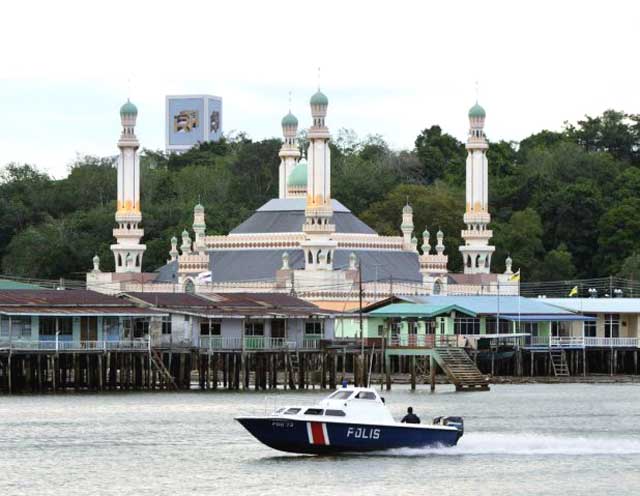On The Road: Wobbly walkways and water taxis - everyday life in a Borneo village on stilts

Your support helps us to tell the story
From reproductive rights to climate change to Big Tech, The Independent is on the ground when the story is developing. Whether it's investigating the financials of Elon Musk's pro-Trump PAC or producing our latest documentary, 'The A Word', which shines a light on the American women fighting for reproductive rights, we know how important it is to parse out the facts from the messaging.
At such a critical moment in US history, we need reporters on the ground. Your donation allows us to keep sending journalists to speak to both sides of the story.
The Independent is trusted by Americans across the entire political spectrum. And unlike many other quality news outlets, we choose not to lock Americans out of our reporting and analysis with paywalls. We believe quality journalism should be available to everyone, paid for by those who can afford it.
Your support makes all the difference.This tiny nation on the north coast of Borneo is best known for its Sultan, who is one of the richest men on earth; his brother Prince Jefri, whose yacht has tenders named Nipple 1 and Nipple 2; and oil wealth that has propelled this country to the world's fourth-highest GDP per capita in the IMF's 2009 rankings. However, the capital, Bandar Seri Begawan, isn't a gleaming high-rise testament to wealth and commerce like Singapore and Hong Kong, but is extraordinarily green, decidedly sleepy and with a downtown dominated by the golden dome of the elegant Omar Ali Saifuddien Mosque.
Under dark skies pregnant with tropical rain clouds, I attempt to delve into the city's Kampong Ayer (Water Village) which lies on the banks of the Sungei Brunei, home to almost 40,000 citizens (10 per cent of Brunei's population). Its 4,200 stilted buildings sit precariously over the river and are connected by over 35km of narrow walkways. As I grope my way down wobbly planks and reach for invisible rails, I note the locals skipping with absent-minded abandon back home. I spot a quay and decide to hire one of the belching speedboats that act as water taxis.
As the first drops of rain fall, my boat zips towards the opposite bank, between the stilts of schools, fire stations, mosques and hundreds of bright houses, bougainvillea dripping down their walls to the murky depths below. The Sultan's vast palace – all 1,778 rooms and 257 toilets of it – sits on the opposite bank, its twin gold cupolas clearly visible from the river.
Crashing through choppy water away from the city I scan the banks for proboscis monkeys and crocodiles until I am informed my time is up, leaving me to gaze hungrily downriver into the heart of Borneo.
Footprint's Borneo Handbook is available now (£14.99)
Join our commenting forum
Join thought-provoking conversations, follow other Independent readers and see their replies
Comments